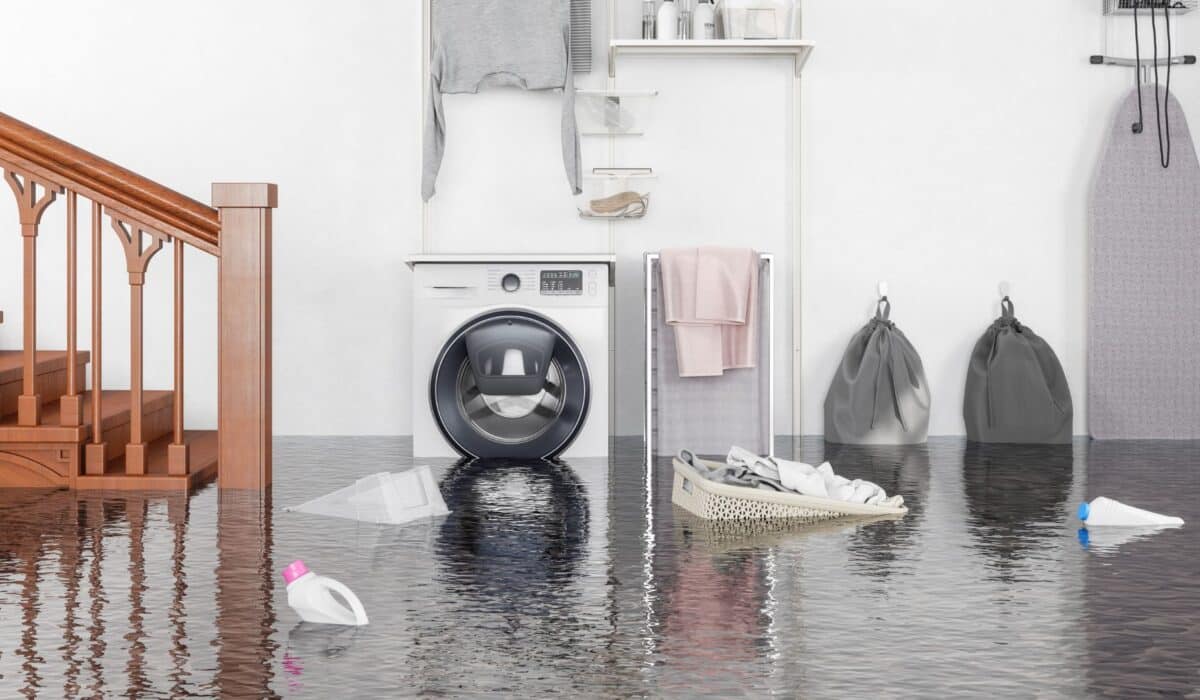A flooded basement can feel like a disaster—and sometimes, it is. Whether it’s from a sudden storm, a burst pipe, or a sump pump failure, basement flooding causes serious damage fast. You’ll need to act quickly, not just to remove the water, but to prevent bigger problems like mold, electrical damage, and structural decay.
This guide walks you through flooded basement cleanup, step by step. And once the water is gone, we’ll explain how a home inspector plays a crucial role in making sure your home is safe and sound.
Start With Safety First
Safety comes before cleanup. If your basement has standing water, don’t walk in until the electricity is shut off at the main breaker. Water and wiring do not mix. If you can’t safely access the breaker, call your electric company or a licensed electrician to handle it.
You should also protect yourself physically. Flooded water may contain sewage, bacteria, or harsh chemicals. Always wear rubber boots, gloves, and a mask before starting any flooded basement cleanup.
Stop the Water Source Immediately

Before you even think about drying, you need to figure out where the water is coming from and stop it.
- Burst or leaking pipes: Quickly shut off your home’s main water valve to stop the flow. Then call a plumber to repair the damaged pipe and check the system.
- Heavy rain or drainage failure: Check gutters and downspouts to make sure water isn’t pooling around your home. You may also need to inspect your sump pump or drainage system for clogs or failure.
- Groundwater seepage or cracks: If the basement floods even without a clear water source, it could be groundwater seeping through walls or floor cracks. This usually requires professional waterproofing or foundation repair.
Once the source is handled, you can safely begin the flooded basement cleanup process.
Document the Damage for Insurance
Before you start moving items or cleaning up, document the damage thoroughly.
- Take clear, detailed photos and videos of everything affected—walls, floors, furniture, electronics, and personal items. Capture both wide shots of the room and close-ups of specific damage.
- Make a list of damaged items with estimated values and purchase dates. Be honest but thorough. Include model numbers or receipts if available to support your insurance claim.
- Store the documentation safely, preferably in a cloud-based folder or external hard drive. This way, you won’t lose it if your devices were also affected.
These records help ensure you receive fair compensation and can simplify the claims process later.
How to Clean Up a Flooded Basement
Flooded basement cleanup involves several steps. It can take days depending on the extent of the damage. The goal is not just to remove water, but to make sure the area is dry, clean, and safe to use again.
- Remove the water as soon as possible: For small amounts of water, a wet/dry shop vac can do the job. For several inches or more, you’ll need a sump pump or professional water extraction service. Don’t delay—standing water causes mold and damage within 24 to 48 hours.
- Dry the space thoroughly and quickly: Use industrial fans and dehumidifiers to remove moisture from the air and surfaces. Open windows if the weather allows. Pull up wet carpet and padding—they rarely dry out completely and can hold mold. If drywall has absorbed water, you’ll likely need to cut and replace affected areas.
- Throw away unsalvageable items: Items made from porous materials—like cardboard, books, upholstered furniture, and mattresses—should be discarded if soaked. They absorb water deeply and are nearly impossible to sanitize completely. Keep only what you can safely clean and dry.
- Sanitize all surfaces and items: After drying, clean hard surfaces with a bleach and water solution (1 cup bleach to 1 gallon of water). This kills bacteria and mold spores. Wear gloves and a mask during this step, and avoid mixing bleach with other chemicals.
Proper flooded basement cleanup is essential to restore your home safely—but it’s not the final step.

Why You Need a Home Inspector After Basement Flooding
Once everything looks clean and dry, it’s tempting to move on. But appearances can be deceiving. Water may have caused hidden damage that could cost you down the line.
- Foundation inspection: Water can weaken foundation walls, cause cracks, or increase settling. A home inspector checks for structural issues that could worsen over time.
- Moisture detection behind walls and under floors: Even when surfaces feel dry, moisture can linger inside walls or under flooring. This creates the perfect conditions for mold to grow undetected.
- Electrical safety checks: If wiring, outlets, or appliances were exposed to water, they could pose serious fire or shock risks. A home inspector will assess these systems and may recommend further evaluation by a licensed electrician.
- Documentation for resale or insurance: A home inspection report provides an objective assessment of the property’s condition after the flood. This is helpful for insurance claims or future buyers.
Hiring a home inspector after your flooded basement cleanup protects your investment and gives you peace of mind.
How to Prevent Future Basement Flooding
No one wants to go through flooded basement cleanup twice. The good news? A few preventative steps can reduce the risk of future problems.
- Install a sump pump with backup power: A sump pump removes excess water during storms or plumbing mishaps. Add a battery backup system so it still works if the power goes out during a storm.
- Improve exterior drainage: Make sure your gutters are clean and downspouts direct water at least 6 feet away from your home. Consider regrading your yard if water consistently pools near the foundation.
- Seal foundation cracks and waterproof your basement: Cracks in concrete let water seep through during heavy rain. Seal them with waterproof epoxy or hire a professional to apply basement waterproofing membranes or coatings.
- Keep up with plumbing maintenance: Old pipes, weak joints, and failing water heaters can all lead to flooding. Have a plumber inspect your plumbing system every few years and replace aging fixtures before they break.
- Schedule annual home inspections: A licensed home inspector can spot early warning signs, from moisture problems to structural vulnerabilities. Routine checks help you catch small issues before they become big repairs.
Preventing a future flood takes planning, but it’s worth every effort to avoid the damage and stress that comes with water in your basement.
Conclusion
Flooded basement cleanup isn’t just about drying things out—it’s about protecting your home from deeper, long-term damage. From the first step to the final sweep, everything needs to be done thoroughly and correctly.
Once the water is gone and the basement looks clean, don’t stop there. A home inspection ensures your foundation, walls, and systems are safe, dry, and ready for the future.
If you’ve dealt with basement flooding, let us help. Schedule a professional home inspection today and get peace of mind knowing your home is truly safe from hidden damage.

